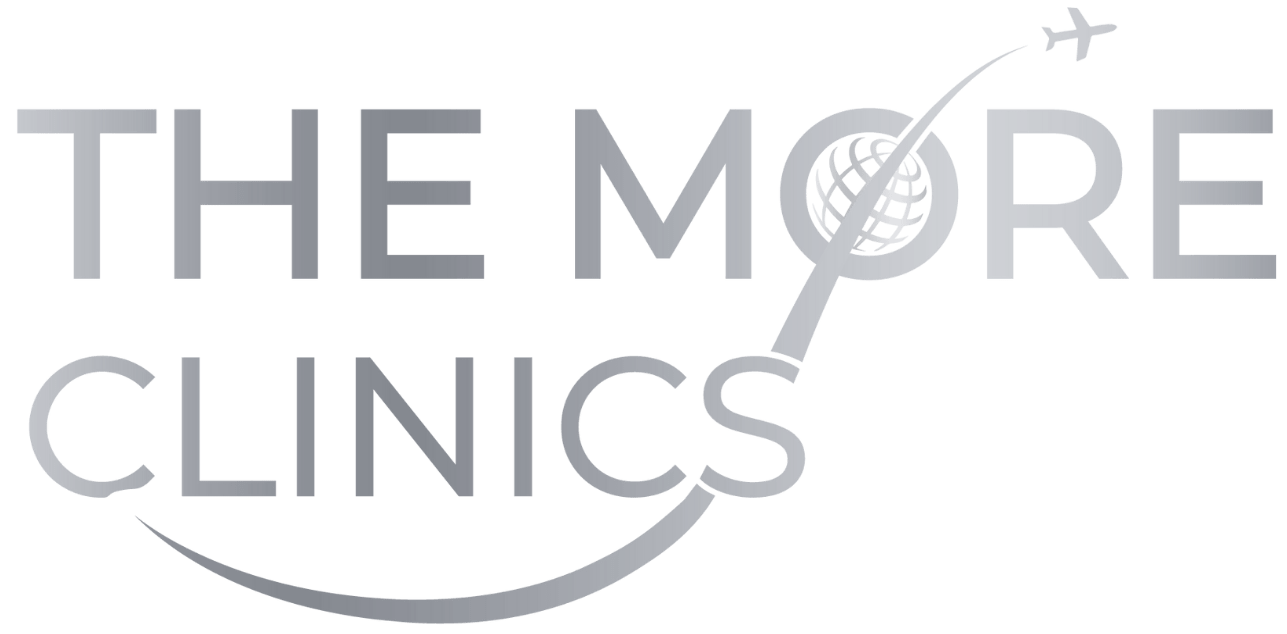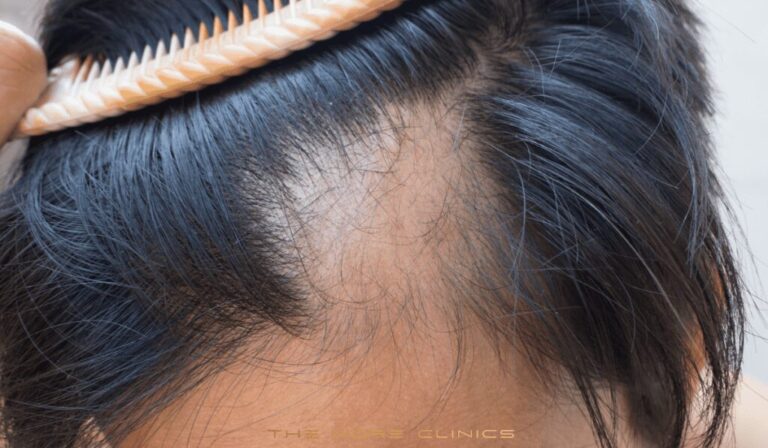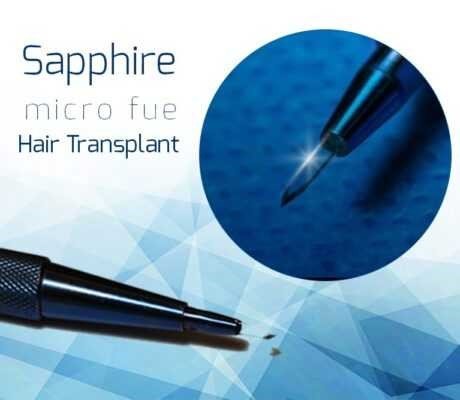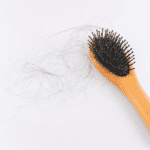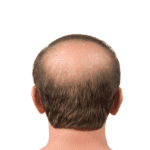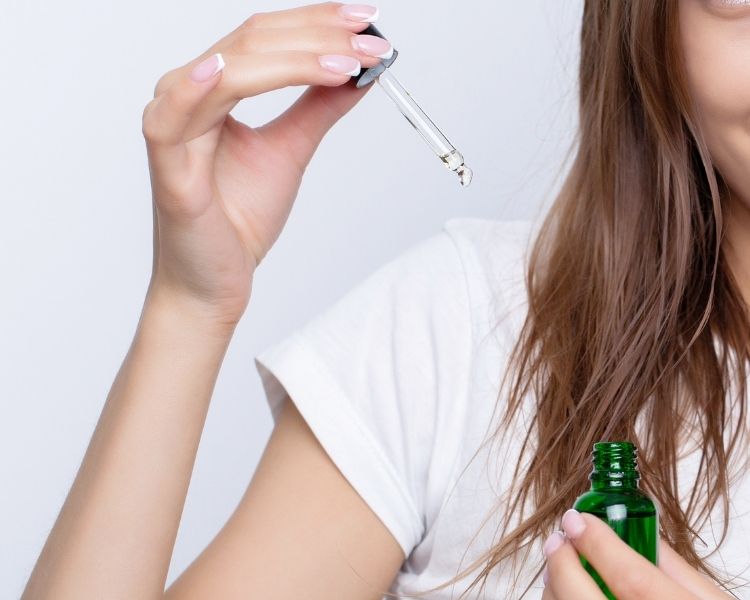Transform Your Look: A Guide to Beard Transplant in Antalya, Turkey
Discover the ultimate guide to Beard Transplant in Antalya, Turkey. Learn how to transform your look with expert procedures in a renowned destination.
- Introduction: The Rise of Beard Transplants
- Why Choose Antalya, Turkey?
- Understanding the Beard Transplant Procedure
- Ideal Candidates for Beard Transplants
- Preparing for Your Beard Transplant
- The Surgery: Step-by-Step Guide
- Post-Transplant Care and Recovery
- Expected Results and Timeline
- Cost of Beard Transplants in Antalya
- Potential Risks and How to Mitigate Them
- Success Stories and Patient Testimonials
- Combining Beard Transplants with Other Treatments
- Frequently Asked Questions
- Conclusion: Is a Beard Transplant Right for You?
Introduction: The Rise of Beard Transplants
Beard transplants have seen a significant rise in popularity over recent years. Many men are exploring this cosmetic procedure to achieve a fuller, more defined beard. This trend can be attributed to several factors:
- Cultural Influence: Beards have become a statement of style and masculinity in many cultures. Prominent figures in entertainment, sports, and business are often seen sporting well-groomed beards, influencing public perception and desire.
- Advanced Techniques: Technological advancements in the field of hair restoration have made beard transplants more accessible and effective. The introduction of Follicular Unit Extraction (FUE) allows for precise, minimally invasive procedures with natural-looking results.
- Self-Confidence: For many individuals, the lack of facial hair can negatively impact self-esteem. Beard transplants offer a solution, providing a boost in confidence and self-image.
- Customisation: Modern procedures allow for significant customisation. Patients can choose the density, shape, and even the texture of their new beard. This bespoke approach caters to individual preferences and facial features.
- Global Accessibility: Cosmetic surgery hubs like Antalya, Turkey, have become go-to destinations for beard transplants. These locations offer high-quality services at competitive prices, attracting an international clientele.
Key Drivers Behind the Surge
- Affordability: Compared to Western countries, places like Turkey offer cost-effective solutions without compromising on quality. This economic difference is a critical factor driving the trend.
- Expertise: Clinics in regions such as Antalya employ highly skilled surgeons who specialise in hair transplantation. Their expertise ensures high success rates and patient satisfaction.
- Minimal Downtime: The FUE technique requires minimal recovery time, allowing individuals to quickly resume daily activities. This feature appeals to those with tight schedules.
Patient Experience
The patient journey typically begins with a consultation, where expectations and realistic outcomes are discussed. The procedure itself involves harvesting hair follicles, usually from the scalp, and implanting them into the beard area. Post-procedure care is crucial for optimal results, with follow-up appointments ensuring the transplanted hair integrates seamlessly.
Future Trends
As demand continues to grow, further innovations are anticipated in beard transplant techniques. These advancements will likely focus on enhancing precision, reducing procedure time, and improving overall patient comfort. The integration of robotic assistance and AI could revolutionise the field, offering even more refined results.
In conclusion, beard transplants have firmly established themselves as a popular cosmetic procedure. With continual advancements and a growing number of satisfied patients, the trend shows no signs of slowing down.
Why Choose Antalya, Turkey?
Antalya offers a unique blend of modern medical facilities and an attractive location, making it an ideal destination for beard transplants. Here are several reasons why Antalya stands out:
Advanced Medical Facilities
- State-of-the-Art Clinics: Antalya is home to numerous clinics equipped with the latest technology and advanced surgical techniques.
- Experienced Surgeons: The city boasts highly skilled surgeons with years of experience in performing successful beard transplants.
- Accreditation and Safety: Many clinics in Antalya are accredited by international health organisations, ensuring high standards of safety and care.
Cost-Effective
- Affordable Procedures: The overall cost of beard transplants in Antalya is significantly lower compared to many Western countries.
- All-Inclusive Packages: Clinics often offer comprehensive packages that include pre-operative consultations, the surgical procedure, accommodation, and post-operative care.
- No Hidden Costs: Transparent pricing structures ensure that patients are aware of all costs upfront, eliminating unexpected expenses.
High Success Rates
- Proven Results: Clinics in Antalya report high success rates, with patients experiencing satisfactory outcomes and natural-looking results.
- Customer Testimonials: Positive reviews and testimonials from previous patients highlight the efficacy and reliability of the procedures.
Travel Convenience
- Accessibility: Antalya is well-connected with direct flights from major cities worldwide, making it easily accessible for international patients.
- Visa Facilitation: Simplified visa procedures for medical tourists make travel planning straightforward and hassle-free.
Tourism Opportunities
- Beautiful Scenery: The city is renowned for its stunning beaches, historic landmarks, and warm Mediterranean climate.
- Cultural Experience: Patients can explore Antalya’s rich cultural heritage, including ancient ruins, museums, and local cuisine, enhancing their overall travel experience.
- Relaxation: The serene environment offers a perfect setting for relaxation and recovery post-surgery.
High Quality of Care
- Personalised Treatment Plans: Clinics provide tailored treatment plans to meet the specific needs and preferences of each patient.
- Comprehensive Aftercare: Continuous post-operative care and follow-up consultations ensure smooth recovery and optimal results.
Choosing Antalya for a beard transplant combines high-quality medical care with the opportunity for a memorable travel experience, making it a compelling choice for individuals seeking to enhance their appearance.
Understanding the Beard Transplant Procedure
The beard transplant procedure is an advanced cosmetic surgery aimed at addressing patchy or less dense facial hair. It involves transferring hair from a donor area—usually the back of the scalp—to the beard region. The technique offers a permanent solution for those desiring a fuller, more defined beard.
- Consultation and Planning:
- The initial consultation with a certified surgeon is critical. During this session, the surgeon assesses facial hair growth, evaluates the donor area, and discusses patient expectations.
- A custom beard design is then planned, considering the patient’s facial structure and desired beard style.
- Extraction Phase:
- The most common method for hair extraction is Follicular Unit Extraction (FUE). In this technique, individual hair follicles are removed from the donor area using micro-punch tools.
- This minimally invasive method ensures minimal scarring and quick recovery.
- Preparation of Recipient Area:
- The beard region is cleaned and numbed with local anaesthesia.
- The surgeon creates tiny incisions or recipient sites on the beard area, following the natural growth pattern of facial hair.
- Transplantation Phase:
- Extracted hair follicles are meticulously inserted into the recipient sites.
- Surgeons ensure precise placement to achieve natural-looking results, maintaining the angle, direction, and density desired.
- Post-Procedure Care:
- Immediate post-procedure guidelines include avoiding touching the transplanted area and refraining from strenuous activities.
- Patients might experience mild swelling and redness for a few days.
- Post-operative instructions often involve using prescribed medications and attending follow-up appointments for optimal recovery.
- Recovery and Results:
- Initial shedding of transplanted hair occurs within 2-3 weeks, known as “shock loss,” which is a normal part of the process.
- New hair growth begins in 3-4 months, with complete results visible around 12 months post-surgery.
- The transplanted hairs blend seamlessly with natural facial hair, offering permanent, natural-looking results.
Understanding this procedure provides clarity and sets realistic expectations, ensuring a positive experience for those pursuing a beard transplant in Antalya, Turkey.
Ideal Candidates for Beard Transplants
An increasing number of individuals are seeking beard transplants to enhance their facial hair. Not everyone is an ideal candidate for this procedure, and several factors determine eligibility.
Factors to Consider
- Age:
- Candidates should typically be over 25 years old. This ensures that natural beard growth has had ample time to fully develop.
- General Health:
- Those in good general health are the best candidates. Chronic conditions such as diabetes or autoimmune disorders can complicate the healing process.
- Hair Quality and Density:
- Adequate donor hair is crucial. Donor hair, usually taken from the back of the scalp, should have similar texture and colour to the desired beard area.
- Non-Responders to Other Treatments:
- Individuals who haven’t seen results from topical treatments, such as minoxidil, might consider a beard transplant as an effective alternative.
- No Active Skin Conditions:
- Candidates must be free of active skin conditions, such as eczema or severe acne, in the beard area to ensure optimal healing.
Psychological Considerations
- Realistic Expectations:
- An ideal candidate understands the outcome of a beard transplant. They have realistic expectations regarding the density and overall appearance post-procedure.
- Commitment to Aftercare:
- Commitment to aftercare protocols is essential. Following the surgeon’s instructions conscientiously post-transplant improves success rates.
Social and Lifestyle Factors
- Time Availability:
- Potential candidates should have sufficient time to allocate for initial recovery and follow-up appointments. Healing can take several weeks.
- Non-Smokers:
- Non-smokers are preferred. Smoking can adversely affect blood circulation to the transplanted area and may impede healing.
Gender and Cultural Factors
- Men Seeking Masculinity:
- The majority of candidates are men desiring a more masculine appearance. Cultural and personal preferences influence this decision.
- Undergoing Gender Transition:
- Transgender individuals undergoing female-to-male transition often seek beard transplants to enhance their facial hair as part of their transition.
In essence, those considering a beard transplant should evaluate these criteria to determine their suitability. Consulting with a qualified specialist further aids in making an informed decision.
Preparing for Your Beard Transplant
Before undergoing a beard transplant in Antalya, it is crucial to ensure proper preparation. Following pre-operative instructions helps in minimising complications and maximising the outcome of the surgery.
- Consultation:
- Schedule an initial consultation with a certified and experienced surgeon.
- Discuss medical history, expectations, and any concerns.
- The surgeon will evaluate the current beard growth and donor hair areas, most commonly the back of the scalp.
- Medications and Supplements:
- Inform the surgeon about all medications, supplements, and vitamins currently being taken.
- Cease the use of blood-thinning medications such as aspirin or ibuprofen one week prior to the procedure.
- Stop using supplements like vitamin E or fish oil, which can increase bleeding risks.
- Alcohol and Smoking:
- Avoid alcohol consumption for at least three days before the surgery.
- Refrain from smoking for at least two weeks before and after the transplant to ensure optimal healing and success.
- Dietary Requirements:
- Maintain a balanced diet to boost immune function and promote faster recovery.
- Stay hydrated; drink ample water in the days leading up to the procedure.
- Pre-Operative Test:
- Complete any required blood tests or medical examinations as advised by the surgeon.
- Hygiene and Personal Care:
- Wash hair and beard thoroughly on the day of the surgery.
- Ensure the facial area is clean and free from lotions, oils, or other products.
- Clothing and Accessories:
- Wear comfortable, loose-fitting clothing on the day of the surgery.
- Avoid wearing facial accessories like jewellery to the clinic.
- Logistics and Accommodation:
- Arrange for transportation to and from the clinic.
- If travelling to Antalya, ensure accommodation is booked in advance to allow relaxation post-surgery.
- Mental Preparation:
- Mentally prepare for the procedure by understanding the steps involved in the transplant.
- It may help to discuss any anxieties with the surgeon during the consultation.
- Post-Operative Care Instructions:
- Obtain a detailed post-operative care plan from the surgeon to understand aftercare requirements and restrictions.
Adhering to the aforementioned steps aids in ensuring a smooth and successful beard transplant procedure.
The Surgery: Step-by-Step Guide
Undergoing a beard transplant in Antalya, Turkey, involves a meticulous and well-organised process led by experienced surgeons using advanced techniques. Below are the key steps in this transformative journey:
- Consultation:
- The journey begins with an in-depth consultation.
- The surgeon assesses the patient’s facial hair density, skin type, and overall health.
- Photos are often taken for analysis and future comparison.
- Any queries and concerns from the patient are addressed.
- Planning the Procedure:
- A detailed plan is mapped out based on the patient’s desired beard style, density, and thickness.
- The donor area (usually the back of the scalp) is identified.
- The follicles are counted to ensure sufficient graft availability.
- Pre-Surgery Preparations:
- The patient is advised to avoid certain medications and substances, such as alcohol and tobacco.
- On the day of the surgery, the patient should wear comfortable clothing.
- The surgical area is sterilised, and local anaesthesia is applied to minimise discomfort.
- Harvesting Hair Follicles:
- Using the Follicular Unit Extraction (FUE) method, individual hair follicles are carefully extracted from the donor area.
- This can take several hours depending on the number of grafts required.
- Precision is essential to avoid damage to the follicles.
- Preparing the Recipient Area:
- Tiny incisions are made with a micro-needle or micro-blade in the beard area.
- The angle, depth, and direction of each incision are planned meticulously to mimic natural hair growth.
- The aim is to achieve a seamless and realistic appearance.
- Implantation:
- The harvested follicles are implanted into the incisions.
- The surgeon ensures the correct density and pattern to reflect the patient’s natural beard growth.
- This step is critical and can also take several hours.
- Post-Surgery Care & Recovery:
- The treated areas are cleaned, and a dressing may be applied.
- Patients receive instructions on how to care for the transplanted area.
- Medications to minimise swelling and prevent infection may be prescribed.
- Follow-up appointments are scheduled to monitor the progress.
- Monitoring & Final Results:
- Initial shedding of transplanted hair follicles may occur within a few weeks.
- New hair growth typically begins within three to six months.
- Full results are generally observed after about a year.Post-Transplant Care and Recovery
The post-transplant period is crucial for ensuring the success of a beard transplant. Adherence to prescribed care routines and understanding recovery expectations can significantly influence the outcome.
Immediate Aftercare
- Rest: Patients are advised to rest in a semi-upright position for the first night to minimise swelling.
- Avoid Touching: Refrain from touching or scratching the transplanted area to prevent dislodging grafts.
- Pain Management: Mild discomfort can be managed with prescribed pain relief medications.
Cleaning and Antibiotics
- Gentle Washing: Light washing of the beard area can typically commence after a few days, following the surgeon’s instructions. Use of a gentle, non-abrasive cleanser is recommended.
- Antibiotics: Antibiotics might be prescribed to mitigate infection risks, and it’s essential to complete the full course as directed.
Daily Care Instructions
- Moisturising: Application of a recommended moisturiser can help keep the skin hydrated and aid in healing.
- Sun Protection: The treated area should be protected from direct sun exposure; applying SPF or wearing a hat can be beneficial.
- Avoidance of Strenuous Activities: Patients are advised to avoid rigorous exercise or activities that induce sweating for the first two weeks.
Long-Term Care
- Monitoring Recovery: Regular follow-up appointments are necessary to monitor progress and address any complications promptly.
- Avoidance of Harmful Substances: Staying away from smoking and excessive alcohol consumption can promote faster healing and enhance transplant success.
- Nutritional Support: Maintaining a balanced diet to provide essential nutrients is beneficial for overall hair health.
Potential Complications and How to Manage Them
- Swelling and Redness: It is normal to experience some swelling and redness, which usually subsides within a week.
- Infection Signs: Indicators such as excessive redness, pus, or persistent pain should be reported to the healthcare provider immediately.
- Hair Shedding: Transplanted hairs may shed within the first few weeks, a normal process before permanent growth begins.
Expected Results Timeline
- Initial Shedding: As part of the natural healing cycle, some hairs might shed initially.
- Visible Growth: Noticeable hair growth typically begins three to four months post-surgery.
- Full Results: The complete outcome of the transplant can usually be seen after nine to twelve months.
Providing diligent post-transplant care and adhering to the recommended guidelines are paramount in achieving the desired appearance. Understanding and managing the recovery process can significantly enhance the overall experience and results.
Expected Results and Timeline
A beard transplant in Antalya, Turkey, offers promising results backed by advanced medical practices and skilled professionals. Patients can expect a significant transformation in their facial hair density, symmetry, and overall aesthetics. The following outlines the expected results and timeline:
Immediate Post-Procedure
- Initial Recovery
After the surgery, patients may notice slight swelling and redness in the transplanted area. This is a normal part of the healing process and typically subsides within a few days. - Graft Stabilization
The transplanted hair follicles, known as grafts, will initially be fragile. It is essential for patients to follow post-operative care instructions to ensure the grafts become securely anchored in their new locations.
First Month
- Shedding Phase
During the first few weeks, transplanted hairs may shed. This ‘shock loss’ is a normal phenomenon and should not be a cause for concern. It indicates that the follicles have entered a dormant phase before regrowth. - Healing and Follicle Activation
By the end of the first month, most of the swelling and redness will have resolved. The dormant phase of the follicles prepares for the next phase of hair growth.
2-4 Months
- Initial Growth
Patients start seeing early signs of hair growth. The new hairs will initially be thin and sparse but will progressively thicken and increase in density.
6-9 Months
- Substantial Growth
Around this timeframe, patients can observe significant improvement in hair density and coverage. The new hairs will appear more natural and blend seamlessly with existing facial hair.
12 Months and Beyond
- Final Results
By the one-year mark, patients usually achieve the full results of their beard transplant. The transplanted hair will have matured, providing a natural, thick beard appearance. Ongoing growth and grooming will maintain the look.
In summary, patients can anticipate a well-planned roadmap towards achieving their desired beard growth. Healing and growth trajectories can vary, but the general timeline provides a comprehensive expectation framework.
Cost of Beard Transplants in Antalya
Beard transplants in Antalya, Turkey, present a cost-effective solution for those seeking facial hair restoration. Interested individuals will find the prices attractive compared to Western countries, without compromising on quality and expertise.
Factors Influencing Cost
Several factors contribute to the overall cost of a beard transplant:
- Clinic Reputation: Prestigious clinics with high success rates may charge more.
- Surgeon’s Expertise: Experienced surgeons with notable credentials may demand higher fees.
- Technology and Methods: Advanced techniques such as FUE (Follicular Unit Extraction) could impact the cost.
- Number of Grafts: The extent of transplant area determines the number of grafts, influencing the price.
- Post-Op Care: Comprehensive post-operative packages, including medications and follow-ups, may add to the expenses.
Typical Price Range
In Antalya, the approximate cost range for beard transplants is:
- Basic Package: €1,200 – €1,800 for 1,000 to 1,500 grafts.
- Standard Package: €1,800 – €2,500 for 1,500 to 2,500 grafts.
- Premium Package: €2,500 – €3,500 or more for 2,500 to 3,500+ grafts.
Inclusions in the Cost
Most clinics in Antalya offer comprehensive packages, which may include:
- Consultation Fees: Initial consultation and assessment.
- Transplant Procedure: Cost of the actual surgical procedure.
- Accommodation: Some packages include hotel stays.
- Transport Services: Airport and clinic transfers.
- Aftercare: Post-op medications and follow-up consultations.
Payment Options
Clinics typically offer flexible payment solutions:
- Installment Plans: Monthly payment options.
- Discounts: Seasonal discounts or promotional offers.
- Insurance: Some insurance plans may partially cover transplant costs.
Comparing to Other Regions
Comparatively, beard transplant costs in Antalya are substantially lower than in:
- Western Europe: €5,000 – €10,000.
- United States: \(7,000 – \)12,000.
- Middle East: \(4,000 – \)8,000.
Additional Considerations
Potential side costs that may arise:
- Travel Expenses: Flights to and from Antalya.
- Additional Treatments: Complementary treatments like PRP (Platelet-Rich Plasma).
Understanding these factors can help patients budget effectively for their beard transplant in Antalya.
Potential Risks and How to Mitigate Them
Undergoing a beard transplant in Antalya, Turkey, can yield remarkable results, but it is essential to be aware of potential risks involved and how to mitigate them effectively.
Common Risks
- Infection: Any surgical procedure carries a risk of infection. Beard transplants are no exception.
- Scarring: Some individuals may experience scarring at the donor or recipient sites.
- Anaesthesia Complications: Reactions to local anaesthesia can occur, though they are rare.
- Unnatural Appearance: There is a possibility that transplanted hair may not blend seamlessly with existing facial hair, resulting in an unnatural look.
- Graft Rejection: The body might reject the transplanted follicles, leading to poor growth or loss of grafts.
- Swelling and Redness: Temporary swelling and redness around the treated area are common.
- Folliculitis: Inflammation of the hair follicles can occur post-procedure.
Mitigation Strategies
- Consult a Qualified Surgeon: Ensure that the chosen surgeon is highly experienced and board-certified. Research their qualifications, training, and patient reviews.
- Pre-Surgical Assessments: Comprehensive pre-surgical assessments should be done to rule out any underlying health conditions that could complicate the procedure.
- Following Post-Operative Care Instructions: Strictly adhere to post-operative care instructions provided by the surgeon. This includes medication schedules, cleaning protocols, and activity restrictions.
- Hygienic Practices: Maintain rigorous hygiene practices to prevent infection. Use prescribed antiseptic solutions to clean the affected areas.
- Adequate Rest: Allow sufficient time for healing by avoiding strenuous activities that may strain the treated area.
- Hydration and Nutrition: Proper hydration and a balanced diet can promote better healing and minimise complications.
- Regular Follow-Up Appointments: Schedule and attend regular follow-up appointments ensuring that any early signs of complications are promptly addressed.
- Communication: Maintain open and honest communication with the medical team regarding any discomfort, unusual symptoms, or concerns that arise during the recovery process.
Preventative Measures
- Preemptive Medication: Surgeons may advise preemptive antibiotics or anti-inflammatory drugs to reduce the risk of infections and inflammation.
- Patch Testing: Conducting a patch test for anaesthesia can identify potential allergic reactions before the full procedure.
- Avoidance of Smoking and Alcohol: Abstaining from smoking and consuming alcohol weeks before and after the procedure can enhance recovery and reduce risks significantly.
By being well-prepared and informed about these potential risks and their mitigation strategies, patients can significantly enhance their prospects of a successful beard transplant in Antalya, Turkey.
Success Stories and Patient Testimonials
Antalya, Turkey has become a prime destination for individuals seeking a beard transplant. The success stories and patient testimonials attest to the effectiveness and satisfaction derived from the procedures performed by highly skilled professionals in the region.
Patient Experiences
- John T. from the United Kingdom
John T. underwent a beard transplant in Antalya and was delighted with the results. He mentioned that the clinic staff was highly professional and made the experience seamless. His beard now looks natural, and he feels more confident in his appearance. - Marco A. from Italy
Marco A. shared his experience, highlighting the advanced technology and techniques used during his procedure. He stated that post-transplant care was exceptional, ensuring a comfortable recovery. Marco appreciated the attention to detail and the expertise of the surgeons. - David S. from the United States
David S. was initially sceptical about travelling abroad for a beard transplant. However, his concerns dissipated once he interacted with the medical team in Antalya. David praised the comprehensive preoperative consultation and the remarkable results, which exceeded his expectations.
Surgeon Expertise
Many patients commend the expertise of surgeons in Antalya, pointing out their dedication to staying updated with the latest advancements in beard transplant techniques:
- Dr Ali Canbaz has been praised for his precision and artistic approach, creating natural-looking results tailored to each individual’s facial features.
- Dr Fatma Yildiz received numerous accolades for her patient-centred approach, ensuring comfort and satisfaction throughout the procedure.
Clinic Environment
Patients frequently highlight the state-of-the-art facilities and the hygienic environment of clinics in Antalya:
“The clinic was immaculate, equipped with cutting-edge technology that reassured me of the quality of care I was receiving.” – John T.
Cost-Effectiveness
An aspect consistently appreciated by patients is the cost-effectiveness of undergoing a beard transplant in Antalya. Many testimonials emphasise the affordability without compromising on quality:
- Competitive pricing compared to other countries.
- Comprehensive packages including accommodation and transportation.
- High satisfaction rates among international patients.
The combination of professional expertise, advanced facilities, and affordable prices makes Antalya a preferred destination for those seeking to transform their appearance through beard transplantation.
Combining Beard Transplants with Other Treatments
In the quest for achieving the perfect look, many individuals opt to pair beard transplants with other complementary treatments. By doing so, they can enhance not only the appearance of their facial hair but also overall facial aesthetics.
Microneedling
Microneedling involves using a device with fine needles to create micro-injuries on the skin. This technique can be highly effective when combined with beard transplants. Benefits include:
- Enhanced Hair Follicle Growth: It stimulates the production of collagen, which can improve the environment for transplanted hair follicles.
- Improved Skin Texture: Reduces scars and improves skin texture, providing a healthier canvas for new beard growth.
Platelet-Rich Plasma (PRP) Therapy
Platelet-Rich Plasma (PRP) therapy involves injecting the patient’s own platelets into the skin to promote healing and hair growth. PRP therapy can benefit beard transplant patients by:
- Accelerating Recovery: Speeding up the healing process of both donor and recipient areas.
- Boosting Hair Growth: The growth factors in platelets invigorate hair follicles, enhancing the density and quality of the beard.
Hormonal Treatments
For some individuals, hormonal imbalances can inhibit beard growth. Hormonal treatments can be utilised alongside beard transplants to maximise results. These may include:
- Testosterone Therapy: For those low in testosterone, supplementation can significantly aid in beard growth.
- Topical Minoxidil: Boosts hair follicles’ activity and can be applied directly to the beard area to enhance growth post-transplant.
Skincare Treatments
Healthy skin is crucial for optimal hair growth. Various skincare treatments can be combined with beard transplants to ensure the skin is in the best condition to support new hair:
- Hydration Treatments: Moisturising treatments that ensure the skin remains hydrated, facilitating better hair growth.
- Exfoliation: Regular exfoliation to prevent clogged follicles and to create an optimal environment for transplanted hairs.
The combination of these treatments with a beard transplant can yield impressive results, creating a fuller, healthier-looking beard while enhancing the overall appearance of the face. This integrated approach ensures a holistic enhancement, addressing both skin and hair health simultaneously.

Frequently Asked Questions
What is a beard transplant?
A beard transplant is a surgical procedure that involves transferring hair follicles from one part of the body, typically the scalp, to the beard area. This surgery is designed to enhance the density and appearance of facial hair.
Who is a suitable candidate for a beard transplant?
Individuals with patchy or sparse facial hair, those seeking improved beard density, and those who have lost beard hair due to trauma or surgery are ideal candidates. Patients should be in good overall health and have realistic expectations.
How is the procedure performed?
The procedure involves two main steps:
- Extraction: Hair follicles are harvested from the donor area, usually at the back of the scalp.
- Implantation: These follicles are then meticulously implanted into the beard region to achieve a natural look.
Is the procedure painful?
Local anesthesia is administered to the donor and recipient areas, ensuring minimal discomfort. Patients may experience minor pain or swelling post-procedure, but these symptoms typically subside within a few days.
What is the recovery time?
- Immediate Post-Op: Patients can resume daily activities within a couple of days.
- Full Recovery: Redness and scabbing in the treated area typically disappear within two weeks. Full beard growth can be expected within 3-6 months.
Are there any side effects?
Temporary side effects may include:
- Redness and swelling in the donor area.
- Minor itching or scabbing.
- Rarely, infection or ingrown hairs.
How long do the results last?
The results of a beard transplant are generally permanent. The transplanted hair follicles continue to grow naturally, similar to the original facial hair.
What is the cost of a beard transplant in Antalya, Turkey?
The cost varies depending on several factors including the number of grafts required and the clinic chosen. On average, the procedure may range between \(2,000 to \)5,000, making it a cost-effective option compared to other countries.
Why choose Antalya, Turkey for a beard transplant?
- Affordable Rates: Competitive pricing without compromising quality.
- Experienced Surgeons: Highly skilled and experienced surgeons.
- Advanced Techniques: State-of-the-art facilities and up-to-date techniques.
- Tourism Benefits: Beautiful location offering a chance to combine medical treatment with leisure.
How to book a consultation?
Potential patients can contact clinics directly via their websites or phone numbers. Many clinics also offer online consultation services, where initial assessments and queries can be addressed remotely.
What should one prepare before the procedure?
Patients should follow these steps:
- Refrain from smoking and drinking alcohol at least one week before surgery.
- Avoid taking blood thinners or certain medications as advised by the surgeon.
- Discuss any health conditions or allergies with the medical team.
Is financing available?
Many clinics in Antalya offer flexible financing plans to help patients manage the cost of the procedure. Prospective patients should inquire directly with the clinic regarding available payment options.
Conclusion: Is a Beard Transplant Right for You?
Determining whether a beard transplant is the appropriate solution requires careful consideration of several factors. A beard transplant can offer a transformative experience, but it may not suit everyone’s situation or goals.
Benefits of Beard Transplant:
- Enhanced facial aesthetics: A fuller beard can significantly improve facial symmetry and aesthetics.
- Boost in self-esteem: Many individuals report increased confidence and satisfaction with their appearance.
- Permanent results: Unlike temporary solutions, a beard transplant offers lasting results.
- Customization: The procedure allows for tailored design depending on personal preferences regarding shape, density, and style.
Considerations Before Opting for a Beard Transplant:
- Health and medical history: Individuals should be in good general health. Conditions like alopecia areata, hormone imbalances, or certain skin diseases could impact transplant success.
- Donor hair availability: Sufficient donor hair from a dense area such as the back of the scalp is crucial for transplant viability.
- Time commitment: The procedure requires time, including consultation, surgery, and recovery. The complete growth of a full beard might take several months post-procedure.
- Cost: Although typically more affordable in places like Antalya, Turkey, the procedure still represents a significant investment.
- Realistic expectations: Results vary based on individual characteristics like hair type and growth rate. Understanding achievable outcomes is essential.
Seeking Professional Advice:
- Consultation: Prior to making a decision, scheduling a consultation with a qualified surgeon is vital to discuss suitability, expectations, and potential risks.
- Second Opinions: Seeking opinions from multiple experts can provide valuable insight and additional confidence in the chosen path.
- Research: Thoroughly researching clinics, reading reviews, and viewing before-and-after portfolios can help in making an informed choice.
Deciding on a beard transplant involves weighing the benefits against personal circumstances and expectations. By considering these factors and consulting with professionals, one can make a more informed decision that aligns with their aesthetic goals and lifestyle.
GET A FREE CONSULTATION!
Let’s Start Planning Your Treatment %100 Guarantee Results.
